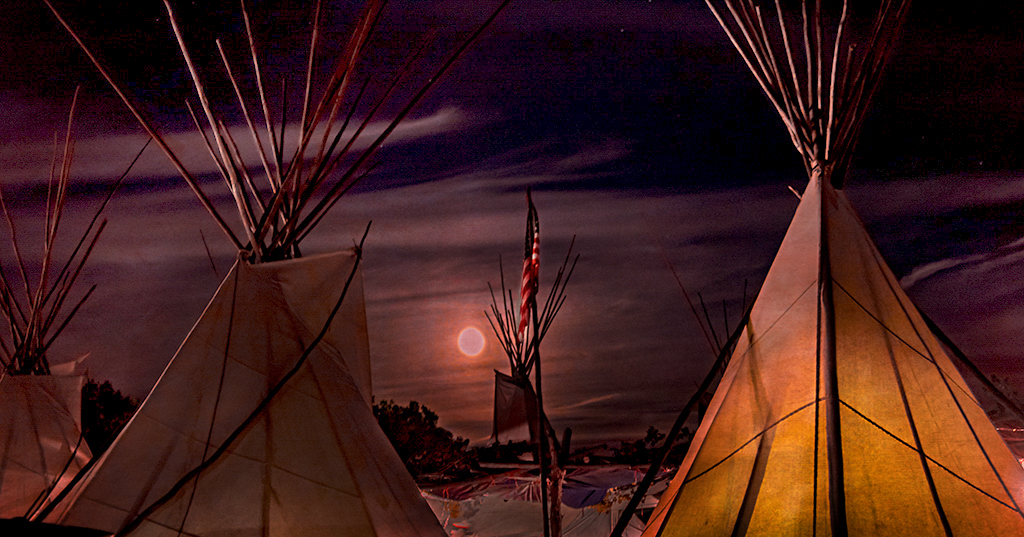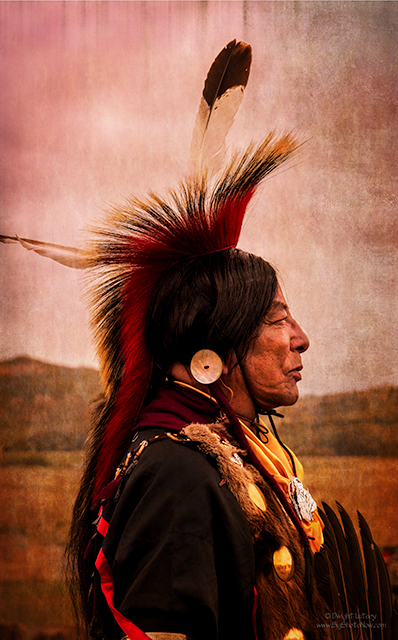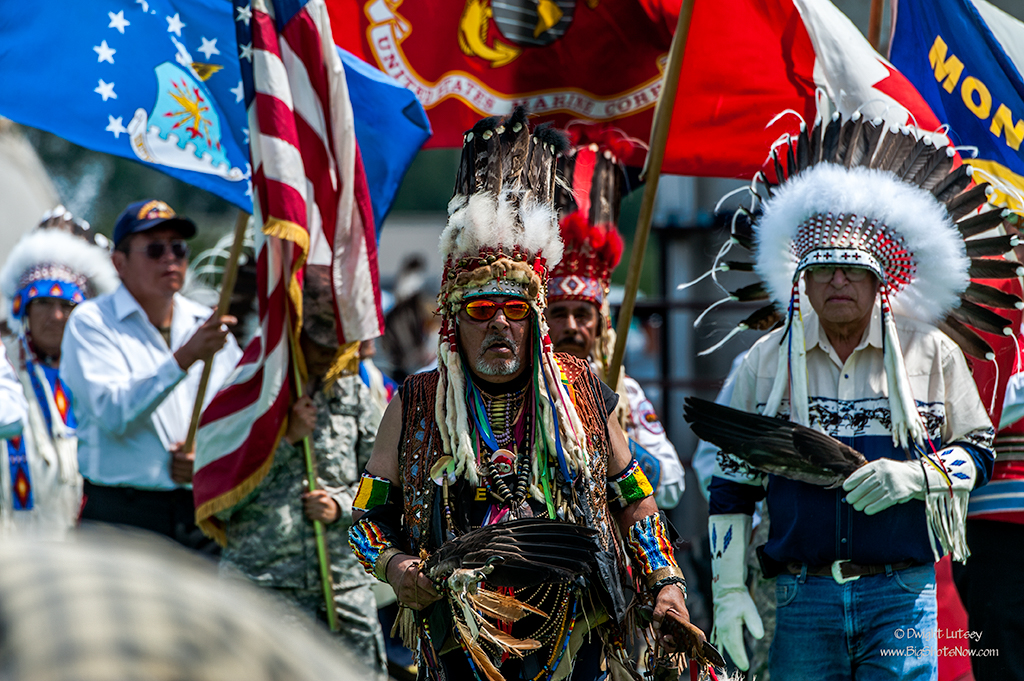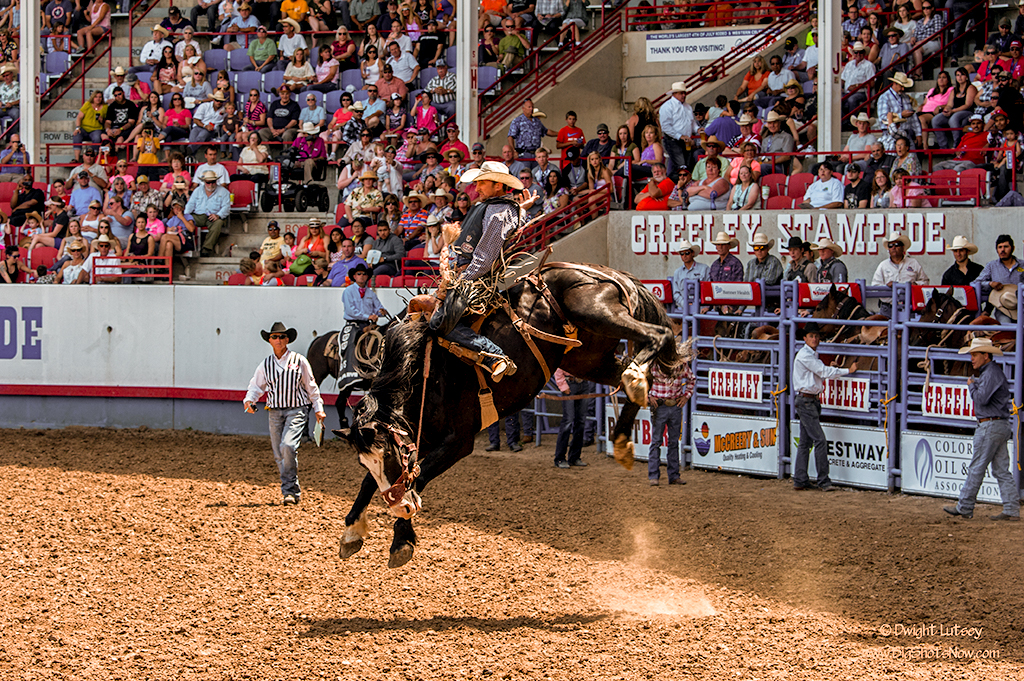This post has been moved to OpenChutes.com. All future postings of Powwows, Indian Relay Races, Rodeos and Rendezvous will be posted there from now on exclusively. So if you’re looking for new images and posts for all those events attended this year, plus all the old posts posted on BigShotsNow.com check out OpenChutes.com. See you there!
It was nearly midnight as I walked through the camp. It had been a long day. It was Crow Fair 2016 and as always it was spectacular. Starting early in the morning to photograph the staging of the parade, following and shooting the dance competitions, watching the evening performances, it was a day packed full of excitement. This was the last day and I was heading home in the morning.
It had been cloudy and although the sky was covered by those clouds, occasionally the full moon would show itself but never long enough to get a good shot of it. But as luck sometimes favors the photographer the clouds seemed to dissolve and there it was in all its glory, full and round and positioned exactly where it needed to be to make this image. I was given a present in the form of this last memory. Walking through the cool night, feeling the moonlight wash over me, hearing the sound of laughter, singing, people calling out to each other, this was the perfect ending to a summer-long trip along the Powwow trail.
I began the summer in late April with the opportunity to photograph the largest powwow in North America, the Gathering of Nations in Albuquerque, New Mexico. Thousands of dancers, singers, drummers, participants, spectators, all brought together to celebrate their culture. This was spectacle at its grandest. At one point there were over 2800 dancers coming and going from the arena floor. This is like the Superbowl of powwows.
As the summer progressed I had the opportunity to attend powwows and meet people from nearly every tribe in the western part of the United States. There were Shoshone, Arapaho, Bannock, Cree, Chippewa, Blackfeet, Nez Perce, Sioux, Comanche, Apache, Navajo, Hopi, and many other tribes. There were people from the Cree And Chippewa tribes that came down from Canada to participate in the Chippewa/Cree powwow at Rocky Boy Montana. This event was held in the rolling hills of Northern Montana on a hillside where you could see for two days in any direction. No buildings in sight, nothing but the golden prairie stretching on for miles and miles. The sound of drums and singing and the people dancing carried on the wind for days. The reservation in nestled up against the Canadian border just east of Glacier National Park and it was one of the most natural, authentic places I had the good fortune to visit.
People from the various tribes in Washington and Oregon were at different events along the way. It was a chance to see their different regalia and styles of dancing. All were welcome and made to feel like part of the family. That’s what these gatherings felt like. Large family gatherings where you got to see cousins that you hadn’t seen in years. A place where acquaintances were made and spiritual ceremonies brought everyone close together. The sense of community was strong. It felt good to be there.
Over the course of the summer I took over 20,000 images, many were of the various rodeos that were part of the powwow, but never the less, I took a lot of photographs. Now that I am back at my studio I will begin the daunting task of processing these images and posting them on the site. Hopefully the wait hasn’t been too long for those wanting to see the shots of their powwows. Each event will have its images posted as I get to them. My apologies for the delay.
This has been an incredible summer and I couldn’t be more thankful for the opportunity to observe, photograph, join in. I got to march in the Color Guard at the Western Shoshone/ Bannock Grand Entry where they celebrated the Vets that had served in all the wars. That was the first time in over 50 years that I have had the opportunity to participate in something like that and I will cherish the experience forever. But just as importantly it was the ability to be able to be a very small part in the total experience. Thank you one and all for making that experience possible for me.
As time goes on I will get the photographs you want to see posted. If you don’t see your event, don’t worry it’ll be there. Also please feel free to email me if you have any questions. Thanks for a great summer.





You must be logged in to post a comment.